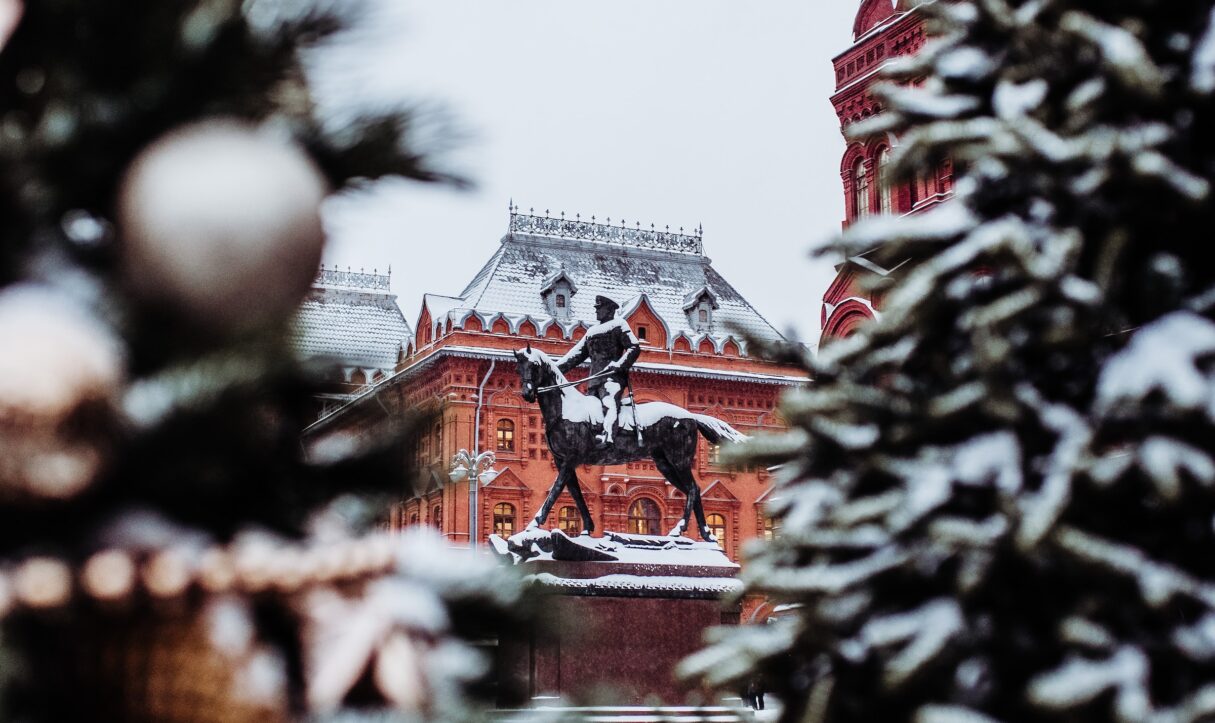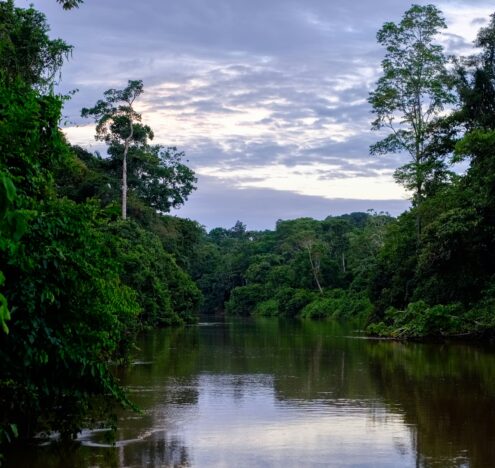When Western countries sanctioned Russia for its war against Ukraine, their aim was two-fold: lower Russia’s military capacity by limiting its access to modern arms and reduce Russia’s revenue streams. So, less money to buy arms, and fewer markets from which to get them — this was the objective of more than a thousand sanctions.
Yet, while Russia may be the most sanctioned country in the world, it is rather successful in bypassing some of the more severe restrictions on its economy and military sector.
Russians — both individuals and companies — are exploiting loopholes in the existing sanctions as well as using corrupt schemes to keep generating high profits and getting much-needed Western arms.
International corruption mechanisms and foreign autocrats are also helping rescue the declining Russian state, and thus, prolonging the war against Ukraine.
“Technically, sanctions’ circumvention is not per se illegal,” said Benjamin Hilgenstock, Senior Economist at Kyiv School of Economics. “This applies to Russia buying military equipment from third countries that never sanctioned it, and that are producing their own stuff,” he explained.
“But then, we’ve got clear violations such as creating subsidiary companies to resell sanctioned Western goods to Russia.” He added, “Investigating these things and enforcing strict penalties would be a nice warning sign to strengthen sanctions compliance.”
The Many Routes for Evasion
Russian sanctions are usually split into two categories. There are individual sanctions, which target regime-linked people, and there are sectorial ones, which focus on companies and products.
The latter tackles a bunch of Russian imports and exports, with energy sanctions being the most important aspect, rivaling only the restrictions placed on Russia’s financial sphere. Energy — gas and oil, most notably — are Russia’s biggest revenue sources; in 2022 alone, they generated $218 billion, with oil being the more profitable one.
Western sanctions on Russian energy came into full force by the end of 2022. The EU, Russia’s biggest pre-war buyer, minimized its energy dependency on the Kremlin by switching to other producers, and G7 placed a price cap on Russian oil that’s transported by G7-owned vessels.
Journalistic investigations discovered corrupt schemes where, through the creation of different subsidiaries in China, Kazakhstan, and the EU, lots of sanctioned goods were imported into Russia.
“The initial EU idea was a complete import and transport embargo to forbid Western insurers and transporters to handle Russian oil,” said Henrik Wachtmeister, a researcher of Global Energy Systems at Uppsala University in Sweden.
“However, this would likely have led to a decrease of Russian exports alongside the global supply, and this would drive up the oil price,” he explained. “Some countries in the West didn’t want to risk higher gasoline and diesel prices. So they went for the price cap idea.”
The price cap was set at $60 per barrel, which, as many experts point out, is too high. The number was explained by the initial fear that Russians would simply stop selling their oil at a lower price. Previously, Russia tried to blackmail the EU by cutting its gas supply to them. The EU managed to diversify their energy streams instead causing Russia to lose its most important gas buyer.
With oil, Russians are more careful. While they threatened that they would not trade below the price cap, they did not follow through and are now selling mostly to India, China, and Turkey.
To transport all of its oil, Russia needs to rely on G7-owned tankers and insurance as G7 controls most of the market. Russian sellers have to present a document proving that the oil is sold at $60 or below, otherwise G7 tankers cannot work with them. This is where space for evasion opens up.
“You can get around the price cap by faking documentation,” said Daniel Spiro, an economist from Uppsala University. “So it’s important to verify the contracts between Russia and the countries which buy its oil to see potential discrepancies.”
In other words, it is very easy for the Russian side to present a contract with false prices and then, agree with the buyer on the actual price that may be well above the cap. In addition, a shipment can be resold multiple times during transit, which makes it harder to check the whole transaction and original selling price.
“There is currently no simple way to check on the buyer to see the actual price they’re paying,” Hilgenstock explained. “For this, you’d need to merge various datasets with shipping information, customs data, and so on. While we have some of that, it’s tough to match the customs declarations with the ship tracking information.”
Different organizations are working on that despite the challenges. For instance, the Kyiv School of Economics is merging data from Russia and its buyers to see potential breaches of price caps. There are already speculations of illicit schemes regarding the Russia-India oil trade and Russia-linked middlemen who facilitate this. However, verifications remain tricky.
“Merging datasets is a second-best option,” Hilgenstock said. “So the sanctioning countries should increase documentary requirements from the customers as a part of the price cap regulation. If you can mandate a certain price for the Russian oil, you can also mandate more data from the buyers,” he explained.
Third Countries and Foreign Companies vs. Sanctions
“There already is a large, possibly the largest by scale, technology export controls regime in place against the Russian Federation,” said Benjamin Schmitt, a senior fellow at the University of Pennsylvania’s Kleinman Center for Energy Policy. He is also a member of the International Working Group on Russian Sanctions.
“However, there’s still too much potential for technology transfer to continue,” he added.
Experts highlight that while Russia is unable to get critical parts of Western technology through direct and legal means, it has found many routes to go around this. Primarily, Russia started buying many alternatives from China, an important producer of dual-use technology, and one of the most important drone makers.
Experts agree that Russia sanctions need to be expanded, and new industries added to the list. At the same time, there must be an improved compliance strategy to make sure that the already applied sanctions are working as intended.
In addition, what cannot be obtained from China is being delivered through third countries, mostly, Kazakhstan and other states in Central Asia, as well as Georgia, Armenia, and Turkey. These countries have special trade agreements with Russia, which facilitate the exchange of goods — and no sanctions.
“Russia can get a lot of dual-use technologies through companies located outside of Russia sanctions’ jurisdiction,” Schmitt continued, “These can import technologies from countries where there are sanction regimes in place. So it is crucial to go after the entities which facilitate that.”
Trade data shows how Kazakhstan and Turkey started importing much greater volumes from the EU and the US. For example, Kazakhstan’s imports from the United States, the EU, and the United Kingdom rose by more than 80% in 2022. At the same time, the country increased its tech goods exports to Russia by ten times in just six months even though Kazakhstan does not produce them.
“A lot of products that are sent to Turkey or Kazakhstan are being reshipped, and they may cost up to $40 billion,” said Jeffrey Sonnenfeld from the Yale School of Management. “There are microelectronics and chips which could be traced, but they are not,” he added. “And there is another troubling development that Russia may also be getting aviation parts this way.”
Journalistic investigations discovered corrupt schemes where, through the creation of different subsidiaries in China, Kazakhstan, and the EU, lots of sanctioned goods were imported into Russia. For this, a company sets up a bunch of other entities across different jurisdictions, so it is difficult to track the end beneficiary. Then, one of the many new companies in this chain buys sanctioned goods legally and then resells it to Russia. The seller may think they’re trading with a legitimate enterprise in one of the third countries while the company is, in fact, Russia-linked and owned. This way, with the help of shadow companies across different countries, Russians are getting the much-needed technology for their war effort.
Sonnenfeld and his team with Yale School of Management are tracking companies that are no longer doing business with Russia — and they also point to the organizations that decided to stay or even increased their trade capacities there. While more than 1,000 companies left, many remain and even expand to neighboring countries to facilitate the new sanctions’ circumvention route.
“I always say my mantra: first go after the entities and the actual firms and actors that help evade sanctions,” said Schmitt. “And then, go after the countries if it becomes a bit more endemic problem from that region.”
“We may not be able to close all this trade, but we can limit it,” Hilgenstock highlighted. “We can restrict access to the EU market to the companies which facilitate this exchange or cut them off from the global financial system.”
Other important tools include tightening of export controls, licensing of regulations, and end-user agreements. Those are relatively easy to do, and they fall into the original intent of the sanctions regime to complicate Russia’s access to dual-use technology.
Doing Less is Dangerous
“There is little risk of trying to do too much,” Spiro highlighted. “It is meaningless to sanction a small part of the economy because a country can bypass it through replacement and so on. The question should be what we lose by not sanctioning.”
“Think of sanctions as a bucket of water with holes in it,” he continued. “If there are many holes through which the water can evade, then your sanctions can be bypassed. So you need to take away all these holes and seal your bucket, which makes a big difference for your sanctions’ implementation. Sanctions complement each other, and you want as many as possible.”
Experts agree that Russia sanctions need to be expanded, and new industries added to the list. At the same time, there must be an improved compliance strategy to make sure that the already applied sanctions are working as intended.
“We could begin to lower the cap stepwise, and observe the Russian reaction,” Wachtmeister said. “Russia has economic incentive to keep exporting at high levels even at quite low prices. But there is a real risk of retaliation by export cuts, if Russia prioritizes hurting oil importers more than maximizing its own profits.”
“And obviously, to keep the price cap mechanism working, you need to strengthen the control over the tanker market.” He added, “So Russia and its allies would continue relying on Western-owned transport. Banning selling tankers to suspected non-compliant actors could be one option.”
Another approach is encouraging countries and international companies to cease working with Russia either through naming and shaming — and a threat of legal punishment — or through facilitating access to other markets for those that do leave.
“Companies that pulled out of Russia were rewarded for this,” Sonnenfeld said. “There was a burst of support for those organizations which did the right thing and announced that they were leaving. The companies which stayed or faked leaving had their stocks tanked. So the public shaming works.”
The expert highlights: Russia’s war against Ukraine provoked an unprecedented business response thanks to publicity and sanctions monitoring. For example, during the sanctions regime on South Africa, about 200 international companies pulled out, boycotting the apartheid. This was a major contributor to the government change. What happened with Russia is five times that.
“Economic sanctions are a form of economic warfare, and it is the last chance to prevent the spread of catastrophic military war,” Sonnenfeld concluded. “They are not to be nice and gentle, but have to increase the pressure. This worked in South Africa and Argentina, but also in places like Libya, East Germany, and Romania where economic sanctions were combined with private sectors and corporate withdrawals.”





















